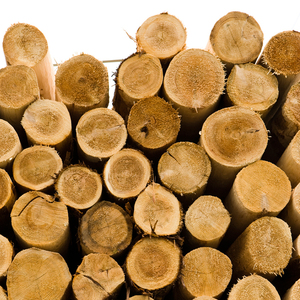Biopulping's Role in Bioenergy




July 3, 2012
BY Luke Geiver
Something special is happening with a research project focused on two white rot fungi genomes. Led by the U.S. DOE’s Joint Genome Institute, a team of international researchers is collaborating on a project to sequence and analyze the fungi strains to understand how enzymes present in the fungi break down plant biomass. It’s not the research that is special, however, it’s the number of people working on the project, revealing that the continual quest for super enzymes used to break down biomass is not only a strong trend in the field of bioenergy research, it’s a popular area of research to be in.
“The fact that we have such a large group of people involved in this project is a clear demonstration that there’s certainly interest in enzyme discovery,” says Dan Cullen, senior author of the research study and a member of the USDA’s Agricultural Forest Service’s Forest Products Laboratory.
In the study, “Comparative genomics of Ceriporiopsis subvermispora and Phanerochaete chrysosporium provide insight into selective ligninolysis,” Cullen and his huge team analyzed C. subvermispora and P. chrysosporium, finding large differences in the way each breaks down lignin. According to Cullen, few fungi have the capability to degrade lignin in the first place, and even fewer have the ability to selectively remove lignin at such an efficient rate. “C. subvermispora is one exception in its ability to do just that,” he said.
Advertisement
Advertisement
Interest in the lignin degrading fungi didn’t start with this research project, however. Kent Kirk, a former researcher at FPL says work with the fungi strain first started at the University of Minnesota, where researchers were working to improve the concept of biopulping, a method of turning woody biomass into pulp for the pulp and paper industry by exposing the woody biomass to the C. subvermispora fungi for two weeks, a process that reduced energy processing costs of the biomass by 30 percent. Although the process was only completed at a 50-ton scale, Kirk says rising energy costs could make biopulping more popular. The work will also help researchers understand the process and the applicable enzymes that can help reduce the costs to process biomass feedstock for bioenergy purposes.
The research by Cullen’s team certainly won’t hurt. Angel Martinez, a researcher at the Spanish National Research Council in Madrid may have found the reason why the fungus works well to degrade lignin. According the Martinez, the C. subvermispora fungus has more manganese peroxidases and laccase, enzymes that speed lignin degradation. On top of that, the team also discovered new enzymes not previously recognized in the C. subvermispora strain.
Advertisement
Advertisement
Although Cullen points out that the cellulose degrading portion of the fungi could be repressed and requires further study, he believes more of the same will continue the progress the team has made in understanding the power of the biopulping fungus C. submvermispora. “To really make direct progress on understanding the mechanism of selective lignin degradation,” he says, the development of more experimental tools and the use of more genetic analysis are needed.
That shouldn’t be a problem given the role of Igor Grigoriev. Grigoriev leads the JGI Fungal Genomics Program, where he says his team is currently working on 20 similar fungi strain genome analysis projects. “This should provide us a better understanding of the diverse and complex mechanisms of lignocellulose degradation in fungi, the influence of these mechanisms on carbon cycling in the forest ecosystem, and ultimately,” he says, “lead to improvements in biopulping.”
—Luke Geiver
Related Stories
The U.S. Department of Energy Bioenergy Technologies Office (BETO) announced up to $23 million in funding to support research and development (R&D) of domestic chemicals and fuels from biomass and waste resources.
The U.S. DOE has announced its intent to issue funding to support high-impact research and development (R&D) projects in two priority areas: sustainable propane and renewable chemicals and algal system cultivation and preprocessing.
Sens. Sherrod Brown, D-Ohio, and Pete Ricketts, R-Neb., in August introduced the Renewable Chemicals Act, a bill that aims to create a tax credit to support the production of biobased chemicals.
The Chemical Catalysis for Bioenergy Consortium, a consortium of the U.S. DOE’s Bioenergy Technologies Office, has launched an effort that aims to gather community input on the development of new biomass processing facilities.
USDA on March 8 celebrated the second annual National Biobased Products Day, a celebration to raise public awareness of biobased products, their benefits and their contributions to the U.S. economy and rural communities.
Upcoming Events










